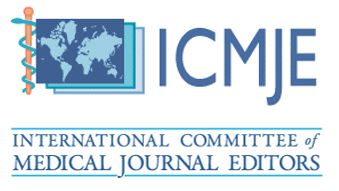Neuromyelitis Optica Spectrum Disorder: Epidemiological, Clinical and Prognostic Study in a Tunisian Cohort
Emna Sansa1,2,3*, Zakaria Saied1,2,3, Cyrine Jridi1,2,3, Fatma Nabli1,2,3, Amine Rachdi1,2,3, Samir Belal1,2,3 and Samia Ben Sassi1,2,3
1 Neurology Department, Mongi Ben Hmida National Institute of Neurology, Tunis, Tunisia.
2 Department of Molecular Neurobiology and Neuropathology, National Institute of Neurology, La Rabta, Tunis, Tunisia
3 Neuroscience Department, Faculty of Medicine of Tunis, University Tunis El Manar, Tunis, Tunisia.
*Corresponding Author: Emna Sansa, Neurology Department, Mongi Ben Hmida National Institute of Neurology, Tunis, Tunisia.
DOI: https://doi.org/10.58624/SVOANE.2024.05.0156
Received: November 04, 2024 Published: November 25, 2024
Abstract
Background: Neuromyelitis optica spectrum disorder (NMOSD) is an autoimmune inflammatory disorder that affects the central nervous system. This study aimed to characterize the demographic and clinical features of NMOSD in Tunisia and to identify predictive factors for poor outcomes.
Methods: We conducted a retrospective study over four years at the Neurology Department of the National Institute of Neurology, Mongi Ben Hmida, Tunis, including patients diagnosed with NMOSD.
Results: The study included 30 patients with NMOSD, with a mean age of onset of 35.86 ± 13.42 years. There was a notable predominance of females (sex ratio of 1M/9F). Systemic lupus erythematosus was the most common associated autoimmune disorder, occurring in 17% of cases. Myelitis was the primary clinical manifestation, observed in 53% of patients, particularly affecting those over 50 years old (13% of the cohort). The initial presentation of NMOSD was predictive of the type of subsequent neurological event. Magnetic resonance imaging (MRI) identified short-segment myelitis in 17% of patients, while anti-AQP4 antibodies were detected in 77%. Severe disease progression (Expanded Disability Status Scale [EDSS] score ≥ 6) was linked to male sex, significant initial disability (initial EDSS score ≥ 4), and a higher number of relapses.
Conclusion: This study demonstrates the increased risk of severe disease progression in male and elderly patients, especially those with spinal cord involvement, highlighting the critical need for timely NMOSD diagnosis in this population.
Keywords: Neuromyelitis optica spectrum disorder; Aquaporin-4 antibodies; Magnetic resonance imaging; Plasma exchange; Prognosis; Tunisia.
Citation: Sansa E, Saied Z, Jridi C, Nabli F, Rachdi A, Belal S, Sassi SB. Neuromyelitis Optica Spectrum Disorder: Epidemiological, Clinical and Prognostic Study in a Tunisian Cohort. SVOA Neurology 2024, 5:6, 244-252. doi. 10.58624/ SVOANE.2024.05.0156











